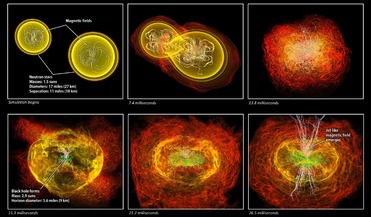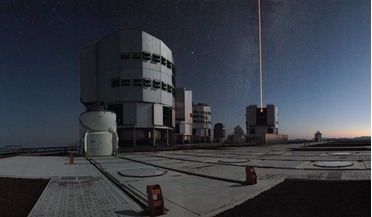 05 May 2016
Contract signed by Airbus, Space UK and ESA to deliver Biomass satellite
05 May 2016
Contract signed by Airbus, Space UK and ESA to deliver Biomass satellite
...2021, the satellite will also utilise an active imaging technology that operates in the microwave portion of the electromagnetic spectrum, but this time it will use a P-band synthetic aperture radar to deliver accurate maps of temperate, tropical and...
 01 August 2016
SETI has new eyes on the skies
01 August 2016
SETI has new eyes on the skies
.... The search for life beyond our own neighbourhood has focused on scanning the radio portion of the electromagnetic spectrum, as the radio band on Earth is the corner-stone of communications technologies. It is therefore reasonable to assume that...
 25 November 2016
New search shows no link between gravitational waves and gamma-ray bursts
25 November 2016
New search shows no link between gravitational waves and gamma-ray bursts
... flashes of gamma radiation, which makes them some of the most energetic astrophysical events observed in the electromagnetic spectrum. Scientists have long suspected a connection between the two I.e. short-GRBs and gravitational waves (GWs), and...
 22 December 2016
Faint signals of water in the nearby Universe can now be detected by ALMA
22 December 2016
Faint signals of water in the nearby Universe can now be detected by ALMA
... given a boost, as the Atacama Large Millimetre/Submillimetre Array (ALMA) has begun observing in a new range of the electromagnetic spectrum which enables the detection of H2O molecules. The telescopes that form the array are sensitive to radiation...
 11 January 2017
ESO Signs Agreement with Breakthrough Initiatives to search for planets nearby
11 January 2017
ESO Signs Agreement with Breakthrough Initiatives to search for planets nearby
... stellar system to Earth. VISIR, as its name suggests, observes light in the mid-infrared portion of the electromagnetic spectrum. This wavelength range is up to 40 times longer than visible light waves, and it allows scientists to peer through...
 08 March 2017
The most distant galaxy yet observed by ALMA gives insight into first stars
08 March 2017
The most distant galaxy yet observed by ALMA gives insight into first stars
... shortly after its formation.” ALMA is designed to study light in the millimeter and submillimeter range of the electromagnetic spectrum, which is the wavelength that dust molecules emit their photons in, therefore the observatory is perfectly suited...